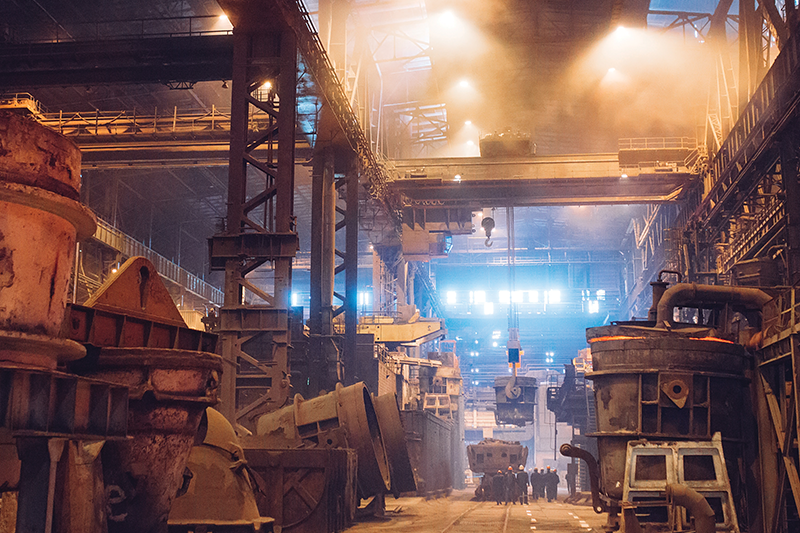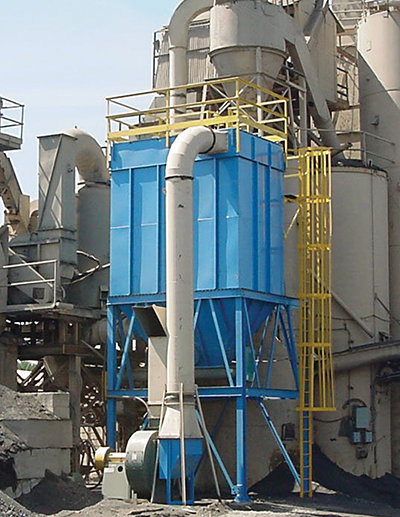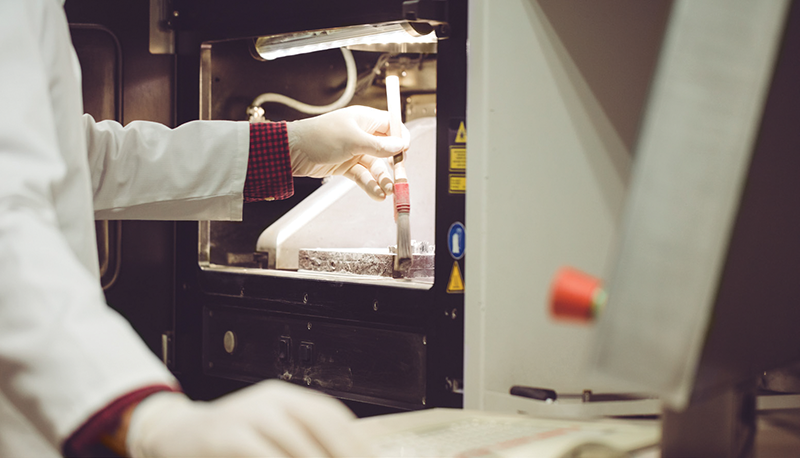
Five key steps towards mitigating combustible dust hazards
By Mike Maxwell, Engineering Manager at Sly Inc.
Features baghouses dust collectors dust control Sly Inc. wet scrubbers Examples of potentially explosive materials can include food products such as candy, sugar, spice, starch, flour and feed or grain, plus tobacco, plastics, wood, paper, pulp, pesticides, dyes, and metals.
Examples of potentially explosive materials can include food products such as candy, sugar, spice, starch, flour and feed or grain, plus tobacco, plastics, wood, paper, pulp, pesticides, dyes, and metals. A fine dust coating anywhere on equipment, ductwork or other areas of your facility means it is past time to institute proper housekeeping measures, and/or to evaluate the dust collection system. Even small quantities of dust, any accumulation, may be considered a workplace hazard depending on the type of dust, potential ignition sources and other circumstances.
A proper dust control system, such as industrial dust collectors, or baghouses, can help with combustible dust and air quality control. Dust mitigation procedures and equipment can help prevent profound consequences that can occur due to combustible dust. This includes preventing potential explosions or fires, but also extends to air permit compliance, regulatory fines, damaged equipment and more.
While this applies to any type of dust, whether simple nuisance dust destined for disposal or dust collected for recovery and recycled back into the production stream, it is especially important regarding combustible dusts. It is the responsibility of every business owner and manager to ensure worker safety and site health by preventing dust explosions. If your facility has dust, the potential exists for a combustible dust event, and the need to design your dust collection system accordingly.
Regulatory agencies oversee workplace conditions
Regulatory agencies use standards such as NFPA 652 and, for applicable industries, require a dust hazard analysis (DHA). If your facility creates or handles particulates that are combustible, you likely need a DHA.
Dust collection systems are a leading source of combustible dust incidents due to the concentration of fine particulates inside the equipment. Therefore, during the DHA, the system’s design will be reviewed. Inspectors will take a close look at the housing, hopper, inlet ducting, and outlet or return ducting of your dust collector to ensure your system was properly designed for explosion protection.
While every application and dust collection system must be individually addressed to see how to best mitigate the risk of an explosion, there are some general tips that you can follow. Here are five steps plant managers, company owners or maintenance personnel can take to increase site safety and better adhere to regulatory guidelines:
- Determine your dust’s combustibility
Standards bodies recommend facilities analyze their particulate material to determine whether it is combustible. According to current NFPA guidelines, combustible dust can be any solid material comprised of particles less than 500 microns in size that are a fire hazard when suspended in air or a similar oxidizing medium.
Companies might be working with materials that do not seem combustible at first. However, as they break down in processing and particulates fall off from handling, it can result in combustible dust. Certain industries’ manufacturing processes are more susceptible to combustible dust production than others.

A pulse jet baghouse with a suppression system will mitigate the risk of a dust explosion extending to other equipment.
Some common materials include agricultural products such as soy flour, sugar, protein powders or powdered milk; carbonaceous dusts such as charcoal and soot, metallic dusts like aluminum and magnesium, and many different dusts from polymers.
No matter the type of combustible dust, a first step involves determining the Kst (the dust deflagration index) and Pmax (maximum explosive pressure) of your dust. The larger these values, the more severe the potential explosion.
Testing for explosive properties is typically done in a 20 litre or one cubic meter container. Additional testing for minimum explosive energy (MIE) and minimum and maximum explosive concentration (MEC) are also often done and helpful in determining the dusts’ combustibility and explosion risk. There are many companies that can provide this testing.
This is also the time to determine if your dust has any other special qualities, such as:
- Are there oils present? (i.e., a hybrid material of mist and powders combined)
- Is the dust water reactive? (Certain metal dusts are highly reactive to water)
- What is the dust loading? (minimum/maximum explosive concentration)
- Does it flow easily or is it an exceptionally fine and abrasive material?
Understanding the nature of the dust is critical to designing your dust collector.
- Choose the Correct Dust Collector/Dust Collection System
The inside of a dust collector supplies a prime location for a dust explosion when the system is not properly designed. Risk factors that need to be considered include ignition sources like static discharges, the dust cloud confinement, and potential buildup of dust on ledges or in pockets.
For combustible applications, specify a dust collector that eliminates internal ledges and potential static buildup by proper bonding and grounding. When handling dusts prone to self-ignition such as coal, it is imperative to avoid storing any dust in the hopper itself, due to potential fire or deflagration risk.
The collector housing must be designed to withstand the maximum expected internal pressure that may result from a dust explosion. This pressure may be either the dust tested Pmax or a lower dust Pred (reduced pressure) that results when explosion mitigation features are added.
- Choose the proper location for your dust collector
Once the results of the DHA reveal the level of risk, the next consideration is the location of the dust collector. Its location can influence a facility’s risk for damage and injuries, in addition to affecting selection of explosion-proof auxiliary equipment.
The collectors that pose the greatest safety risk to workers are those located inside the facility, due to their proximity to workers and explosion proof options are more limited. It is easier to locate a nuisance dust collector at the end of a process line or outside of the plant, while process dust collectors typically must be inside a facility and integrated into the system.
Housekeeping is a prime consideration when mitigating explosion risks and is especially critical for equipment located inside the plant building.
- Add explosion-proof auxiliary equipment
Alleviate the risk of an explosion with auxiliary equipment that is integrated into your dust collection system. The three main types of auxiliary equipment include flameless vents, suppression systems and explosion venting.
The above options are all available for use in outdoor dust collectors. Explosion venting is the most selected option because it is easy to design and use and the most cost effective. Indoor systems are limited to flameless vents and suppression systems, with flameless vents being the most expensive. In some instances, explosion vents can be used on indoor units provided properly sized clear ducting can be installed to vent combustion products to a safe outdoor location.

Dust particles can be categorized according to type and size in microns. The smaller the particle size, the deeper it can penetrate the lungs, although the larger particles can also create health hazards.
Deflagration venting auxiliary equipment consists of the following:
- Flameless vents—A flameless vent is also referred to as a quench tube because it quenches a flame arising from a deflagration. Its design allows for relieving the explosive pressure while retaining the flame within the vent housing to mitigate the potential explosion.
- Suppression systems—A suppression system can be installed on industrial machinery that handles combustible dust and can take the form of pressurized cylinders similar in nature to a fire extinguisher. Their suppressive action is automatically triggered in the event of a deflagration to help mitigate its affects.
- Explosion venting—An Explosion vent helps relieve internal pressure in the AMS (Air-Material-Separator) by blowing open during an event. They vent the pressure and combustion products outside the “exclusion zone,” or the immediate area surrounding the collection equipment, with a distance range that depends on multiple variables.
In addition, relief vents should be located away from other dust hazard zones. Special attention should be paid to the ductwork that connects the dust collection system or baghouse to other pieces of equipment.
A connected system of ductwork has, in the past, been associated with the spread of an initial explosion. Ductwork should undergo regular inspections to evaluate dust accumulation. SLY Inc. can supply isolation solutions for dusty air inlets, clean air outlet, and dust discharge.
Another feature that can aid with reducing combustible dust incidences are grounded and/or conductive filter bags, external grounding of housing, and, of course, ensuring enclosures and wiring meet NFPA-70 (NEC).
Other equipment, such as a sprinkler system, can also help if your dust is not water reactive. In cases where the material involved is water reactive, such as zinc dust or alkali metals, a dry chemical extinguisher kept on hand in the plant can provide an effective safety measure if a fire breaks out. Carbon dioxide suppression systems may also be employed. Sly representatives are prepared to assist in determining the best location and design equipment to protect your facility and personnel.
- Train employees to handle safety equipment
Take the time to properly train employees about proper maintenance and housekeeping procedures and why they are important. In addition, have an incident response plan and techniques in place for safe work practices and ignition source control. Health and safety incident reports often cite lack of proper training contributing to the severity of an event.
Companies should also obtain the proper extinguishing media related to the type of combustible dust produced in the facility, and train workers how to use these extinguishers. It also helps to alert local emergency responders to the type of combustion situation they might encounter if called out to the facility and whether the dust is reactive to water. Fire extinguishers are rated according to the type of material they are designed to control. Keeping the proper safety equipment on hand can help control or diminish a fire to prevent it from growing.
The types of design elements that engineers factor into a dust collection system can include:
- Material discharge height
- Airlocks (takeaway equipment)
- Continuous evacuation of the hopper (i.e., continuous discharge)
- Proper venting or use of mitigation equipment
- Pressure requirements
- Fugitive dust and its prevention
- Sparks or other ignition sources
Mike Maxwell is Engineering Manager at Sly Inc. This article is taken from his blog, also titled Five Key Steps Towards Mitigating Combustible Dust Hazards.
Print this page